Sendible insights What Is Branded Content: Understanding What It Is and Using It to Your Advantage
You’ve already heard the news: content is king, and it’s here to stay.
But you also realise that creating high-quality content that resonates with your audience (and boosts sales) is a craft that’s not easy to master.
Here’s the thing: your content marketing strategy will always fail if it’s more product-focused than people-focused. So today, this guide will walk you through how to create one of the most impactful forms of content: branded content.
This guide contains:
- What is branded content
- The benefits of branded content
- How branded content can help you grow your business in 8 steps
What is branded content
Branded content provides value to the consumer and represents the brand’s core values. Examples include blog posts, YouTube videos, informative social media posts, podcast episodes, etc.
The purpose is to solve your target audience’s problems or alleviate specific pain points.
For example, LawRank—an SEO agency for law firms—incorporates branded content into its marketing strategy through its blog and YouTube channel. Their YouTube channel includes various quick-and-easy tutorials that help their potential clients increase their search traffic. Take for example this video where they walk viewers through Ahrefs’ link intersect tool:
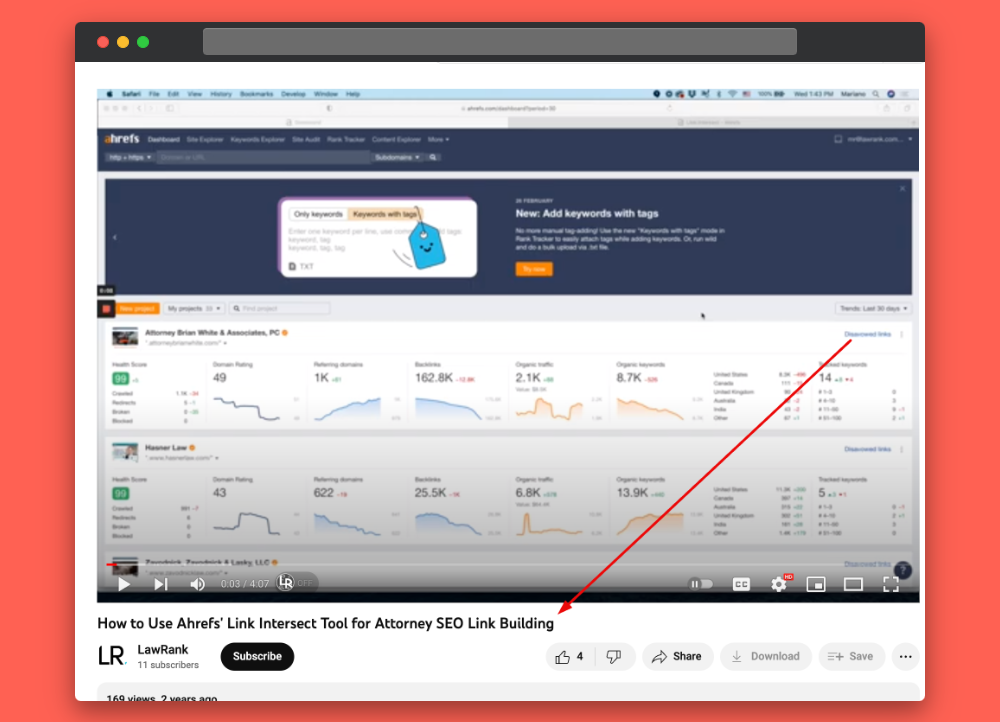
Their blog content covers educational guides like “TikTok for Lawyers” and “Local SEO for Lawyers.”
As you can see, branded content is not a promotion of your products or services. It’s not product-focused or sales-driven marketing strategies.
Branded content is a long-term marketing strategy, not a short-term sale-boosting tactic. Sales follow because you’ve built a relationship with your audience. They know you can help them, and they’ve already gotten value from you. So when they’re ready to buy, they know who to go to.
But this doesn’t mean you can’t subliminally promote your business. Branded content should contain your logo, brand colours, name, etc. Although you’re not promoting your products, your audience must know who you are.
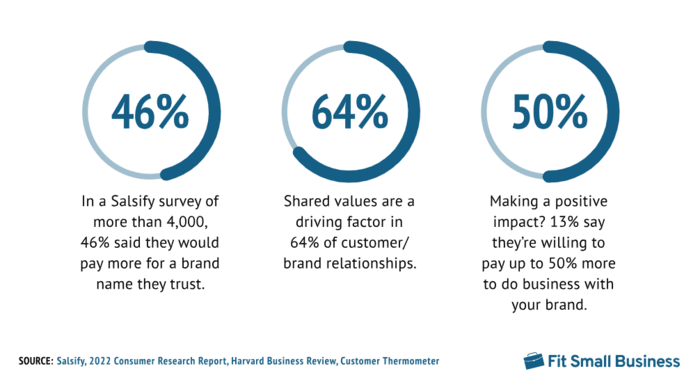
Image Source: FitSmallBusiness
The benefits of branded content campaigns
You know what branded content is. But why should it be an integral part of your content marketing strategy?
1. Build credibility and trust with your audience
Fewer people trust (or even pay attention to) advertisers each year.
Online content creation, like social media and blogging, has introduced a new era of buyers. And it continues to influence the atmosphere for advertisers.
Now more than ever, forming a connection with your target customer base is critical. And branded content makes it easier than ever to do so and build your customer loyalty up.
In a 2023 survey, 91% of businesses used video as a marketing tool, so the video trend is certainly on the rise, especially when paired with branded content.
And after consuming branded content, people are more likely to continue looking for content from the brand.
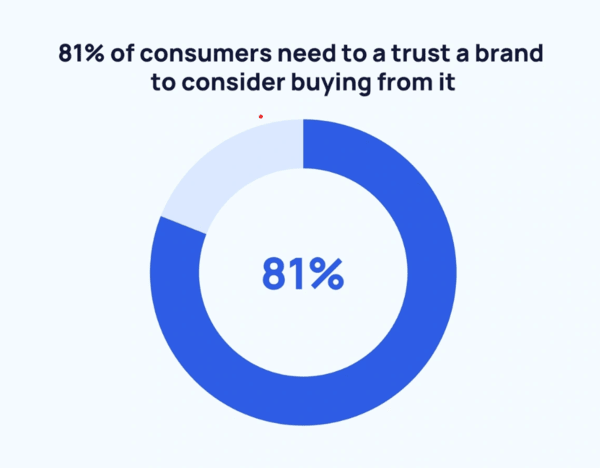 Image Source: Exploding Topics
Image Source: Exploding Topics
2. Increase brand awareness and visibility
One study found that branded content is 22x more engaging than display ads. Meaning you can over 22x your potential by prioritising branded content marketing and saving money on ads.
This makes sense, considering over 32% of people worldwide use ad-blockers.
3. Expands your brand's reach
Creating branded content opens more opportunities to be seen on other platforms. You can use multi-channel content distribution. This lets you cross-post and redistribute your hard work on multiple platforms.
In turn, you reach even more people.
That’s not to mention the content collaboration and influencer marketing opportunities. These let you tap into other people’s bigger audiences. We’ll talk more about this later.
4. Makes you easy to remember
You must be memorable if you want a loyal customer base and high client retention. According to statistics, consistent branding can significantly impact revenue, with businesses experiencing up to a 23% increase in revenue through cohesive and recognizable brand identities.
So, if you're looking to increase your customer loyalty, then you should invest heavily in branded content strategies.
5. It's cost efficient
Not only has branded content proven to be generally more effective than traditional advertising. It’s also usually cheaper.
During a 2022 study, 27 percent of responding marketers said their company spent up to less than one thousand U.S. dollars each month on content marketing effort. It the current market, that is actually a pretty low investment, so it certainly is a cost efficient option to keep in mind
How branded content can help you grow your business in 8 steps
Step 1: Solidify your brand identity
You must know yourself as a brand before influencing others to buy from you. This includes essential things like your logo and brand colours, but your identity should be more profound than that.
Establish your mission, brand’s values, and the message you want to spread. This will be something your audience remembers you by and allows you to connect with more people.
For example, Dove—one of the most renowned haircare brands—commonly takes stands for social causes and issues troubling women and girls.
In 2021, they released a one-minute video called “Reverse Selfie.” They coined the hashtag #TheSelfieTalk, and the video received over 1.8 million views.
All because of their message, which brought awareness to young girls' suffering when pressed by the unrealistic beauty standards of social media platforms.
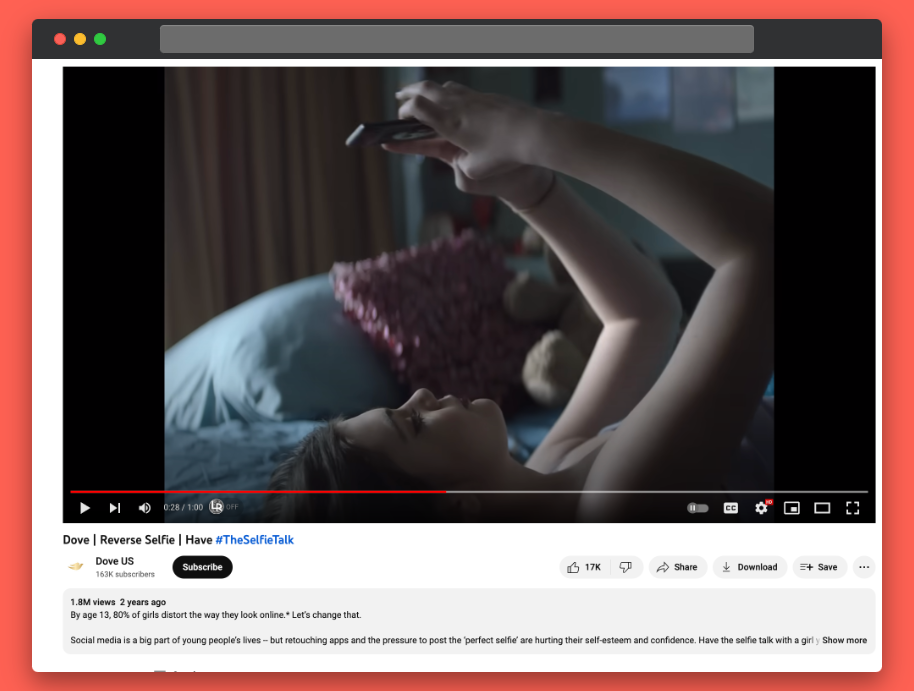
Step 2: Identify your audience’s questions and pain points
Invest time into doing thorough market research. The goal should be to understand your audience’s problems and questions deeply.
What issues are plaguing your target customer or client? What questions do they need answers to before they’re ready to buy? Do they even know they need your help yet? Do they feel lost, overwhelmed, or confused?
You can use research tools like SEMRush, Ahrefs, and Mangools. These let you research what search queries your audience is making the most. And how many competitors have already created content to help them, which gives you an edge.
AnswerThePublic is a free tool that generates tons of ideas for content based on a single search term.
Let’s say your target clients want to start an e-commerce business but don’t know where to start. You can see their most frequently asked questions by searching “e-commerce business” on AnswerThePublic:
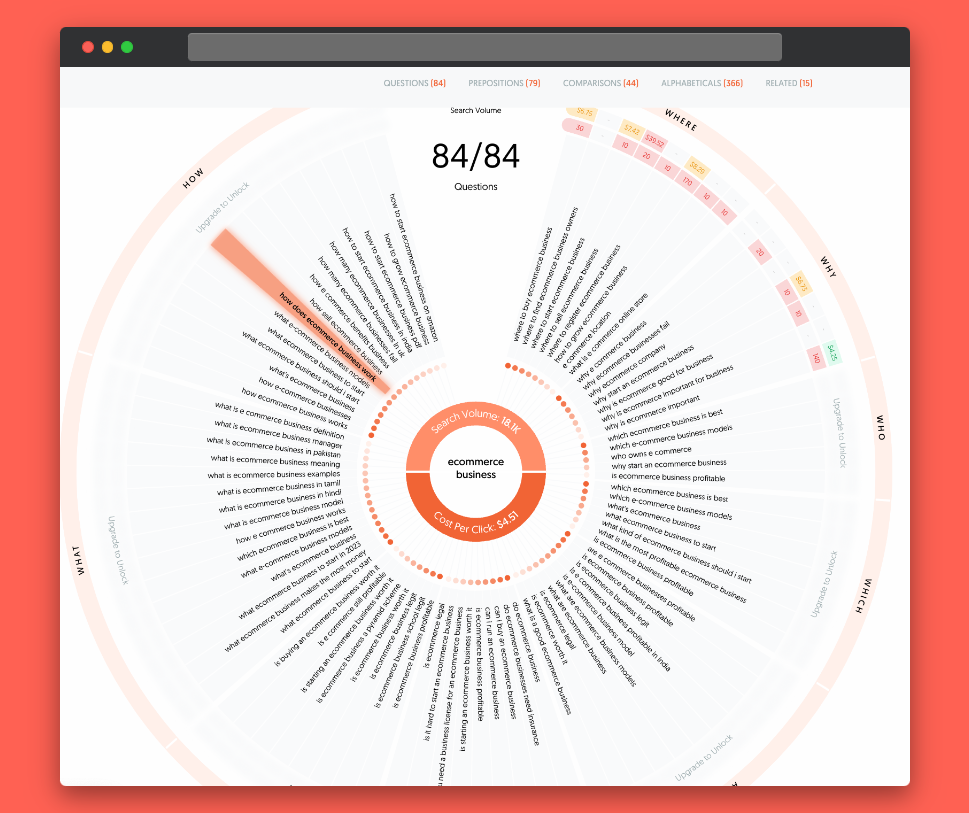
Step 3: Provide the best answer to your audience's problems
After you know what your audience needs help with, it’s time to create branded content.
Remember, branded content can come in many forms:
- Blog posts
- Social media posts
- Email series
- YouTube videos
- Podcast episodes
- Infographics
- etc.
Choose the medium you want to use first and one of your audience’s questions. Then, dedicate time to providing the best answer on the internet.
Step 4: Create shareable content
Content is “shareable” when it inherently makes viewers want to share it with other people. Shareable content breaks complicated topics into easy-to-understand steps. It also turns big data into easy-to-read, straightforward points.
These qualities make content shareable—because it’s easy to understand and follow.
An excellent example of shareable content is infographics.
Infographics turn concepts into easy-to-understand visuals. They also often summarise research so the average, busy person can understand supporting data.
But any kind of content can be shareable if it’s intended to be. When creating your content, keep shareability at the forefront.
Ask yourself how to simplify the topic until a five-year-old understands it.
Your reader (or viewer) should exit the page with a clear action plan if it's a guide. And they should be confident in their new knowledge if you're explaining a topic.
Xoxoday’s “Comprehensive Guide to Customer Experience” is a prime example of shareable content.
Here are a few reasons:
- The guide highlights data in an easy-to-read box separate from the body
- Important terms and definitions stand out in a highlighted box
- Valuable research findings are highlighted as well
- Supporting data is demonstrated in visuals
- An eye-catching infographic explains the outcomes of a bad customer experience
See how their infographic is colourful, well-explained, and simplifies a topic into one page:
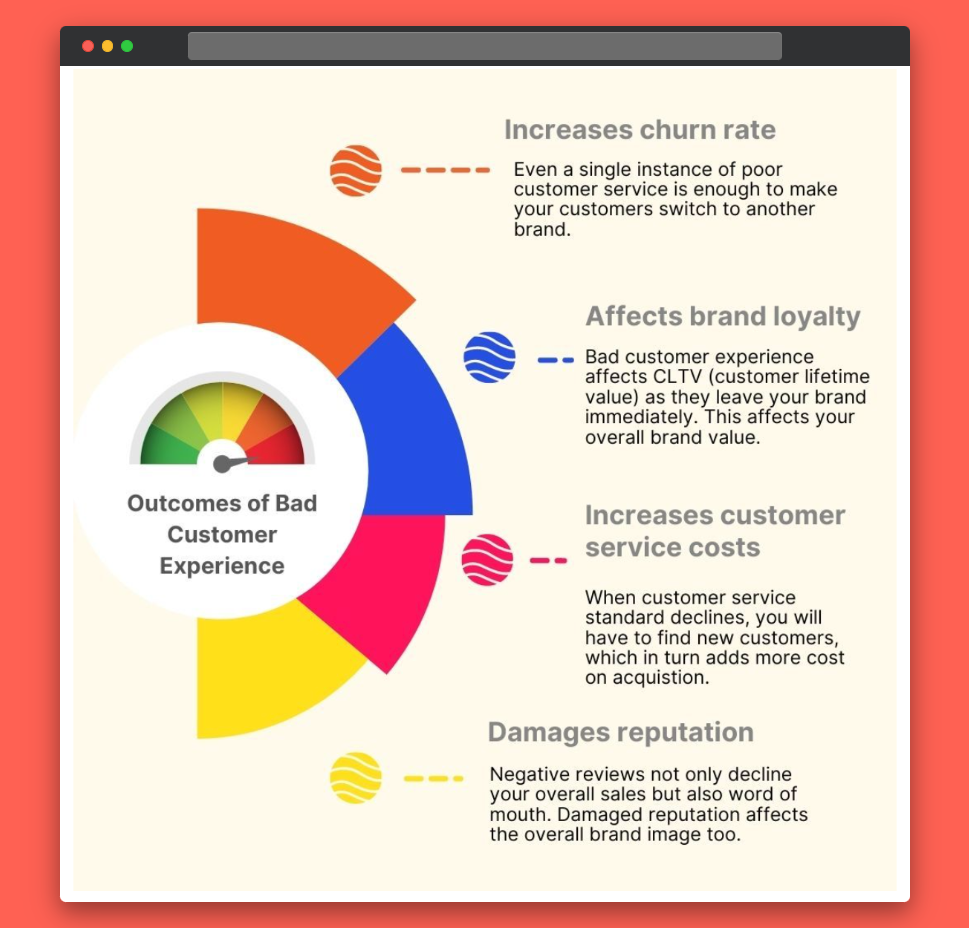
Step 5: Focus on brand storytelling, not selling a product
We’ve already established that branded content is not product-focused. But you must also connect with your audience and keep them engaged.
The best (arguably only) way to do this is by making your content relatable.
How can you sympathise with your audience’s pain points? What real life stories can you tell of how others have overcome the same challenges?
When possible, always speak from personal experience. Throw in some personal stories to spice it up, and avoid constantly using “we” language.
Remember your brand identity from step one? Reflect on the message you want to send and craft stories around it to encourage new customers and boost your identity. Just like the Dove #TheSelfieTalk example.
Step 6: Use multi-channel content distribution beyond traditional advertising
The great thing about branded content is you can reuse it across multiple platforms. This expands your reach and drives even more traffic to your website.
For example, you can turn a YouTube video into a blog post. Or a blog post into a YouTube video.
You can turn a podcast episode into a social media post. Or a social media post into an email. Or an email into a free downloadable guide.
Taking advantage of multi-channel content distribution maximises your reach.
You can squeeze everything out of the precious content you’ve perfected until it’s completely dry. Not only does it save you time, but it’s also cost-effective.
Sendible's bulk import feature comes in handy here since you can import images and text from previous posts and keep them ready to be repurposed.
A brilliant example of multi-channel content distribution is travel blogger Kimberly from KRod Collective.
She posts YouTube videos and blog posts to give tips to solo travellers. And she frequently turns her YouTube videos into blog posts (and vice versa).
For example, her blog post guide on how to travel alone for the first time is also a YouTube video:
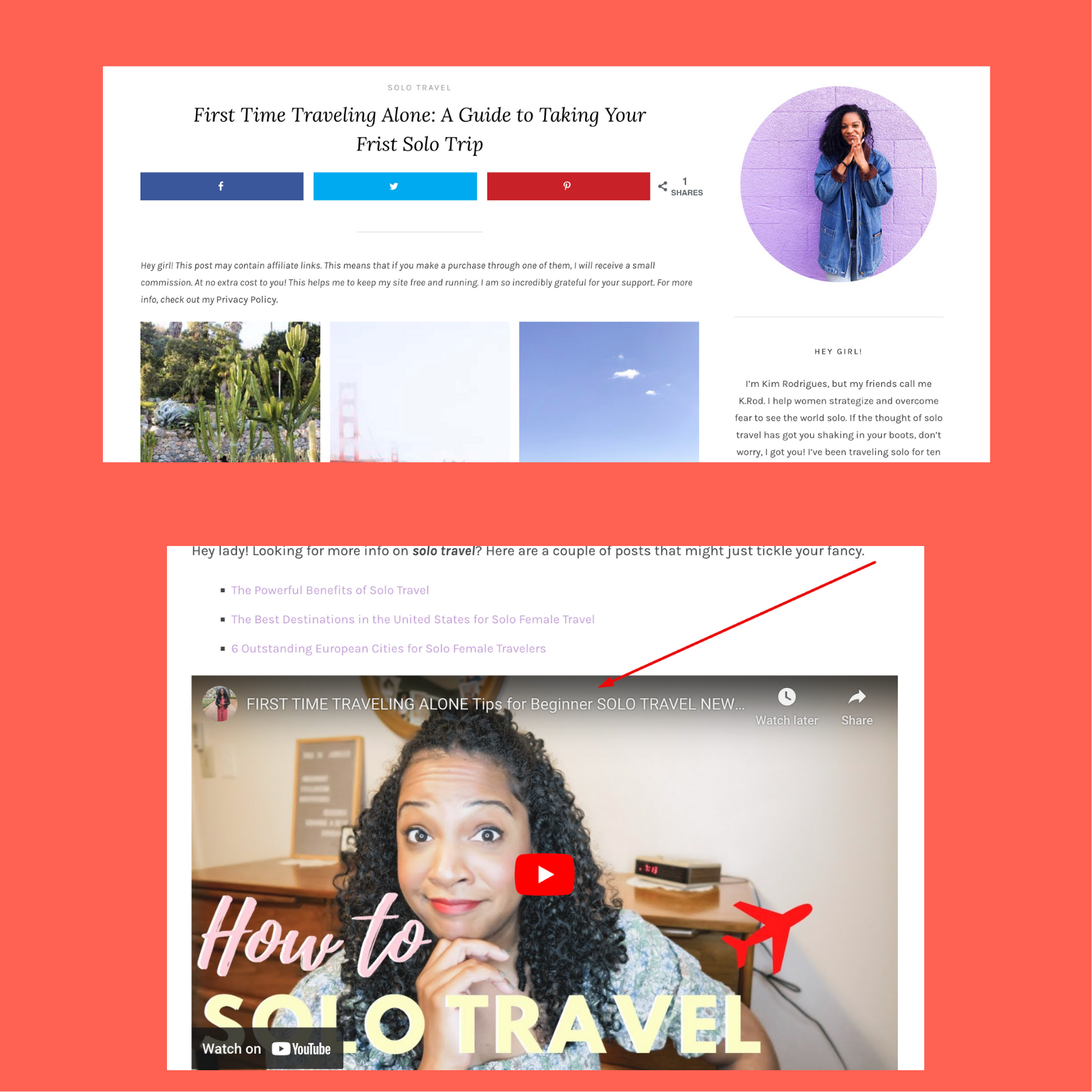
Step 7: Find public figures to collaborate with
Collaborating with others in your industry is a surefire way to expand your audience. You can instantly tap into an audience they’ve already spent time growing—people with the same interests, pain points, and questions as yours.
Whether interviewing another industry expert or participating in influencer marketing, ensure the relationship is mutually beneficial.
Let’s say you’re a collaborative hiring software, for example.
You’ve written several blog posts and filmed videos about perfecting the interview process to find high-quality candidates.
Since your target customers are usually hiring managers, you could collaborate with someone who coaches hiring managers on team building, recruiting, and interviewing. You could film a video together, do a live Q&A, write a blog post interview, etc.
Step 8: Engage with your audience
Don’t underestimate the importance of communicating with your audience. When someone comments on your content, respond as soon as possible. Even if it’s a simple “Thank you for sharing!”
The same goes for emails.
If you have an email list, encourage your subscribers to reply. Remind them you’re here to answer their questions and take feedback. And when they do, respond as promptly as possible.
Your audience should see you as more than a business trying to profit. Interacting with them strengthens the relationship they have with your brand. It also makes you memorable and helps build loyalty and credibility.
Double your reach and increase sales by creating branded content
The ways you can create branded content are limitless. You'll win if your audience (and brand’s story) are at the forefront of your branded content campaigns and go beyond traditional advertising.
Save this guide and follow these steps to start your branded content journey on the right foot.
You’ll be thrilled by the people you reach, when you share your brand story and have a strong branded content marketing strategy, which leads to long-term business growth and sustainability.
Freya Laskowski
Freya is an SEO consultant that helps brands scale their organic traffic with content creation and distribution. She is a quoted contributor in several online publications, including Business Insider, Fox Business, Yahoo Finance, and the Huffington Post. She also owns CollectingCents- a personal finance blog that she grew from the ground up.
You can reach out to her at freya@collectingcents.com
Text copied!


